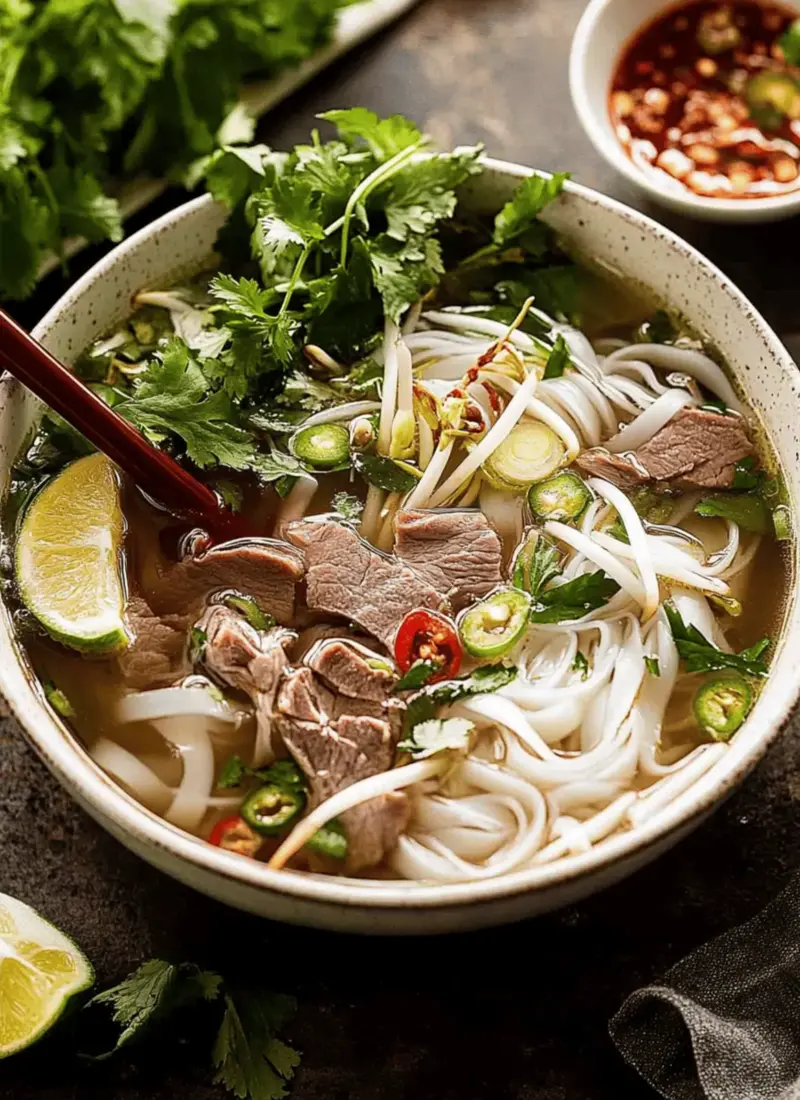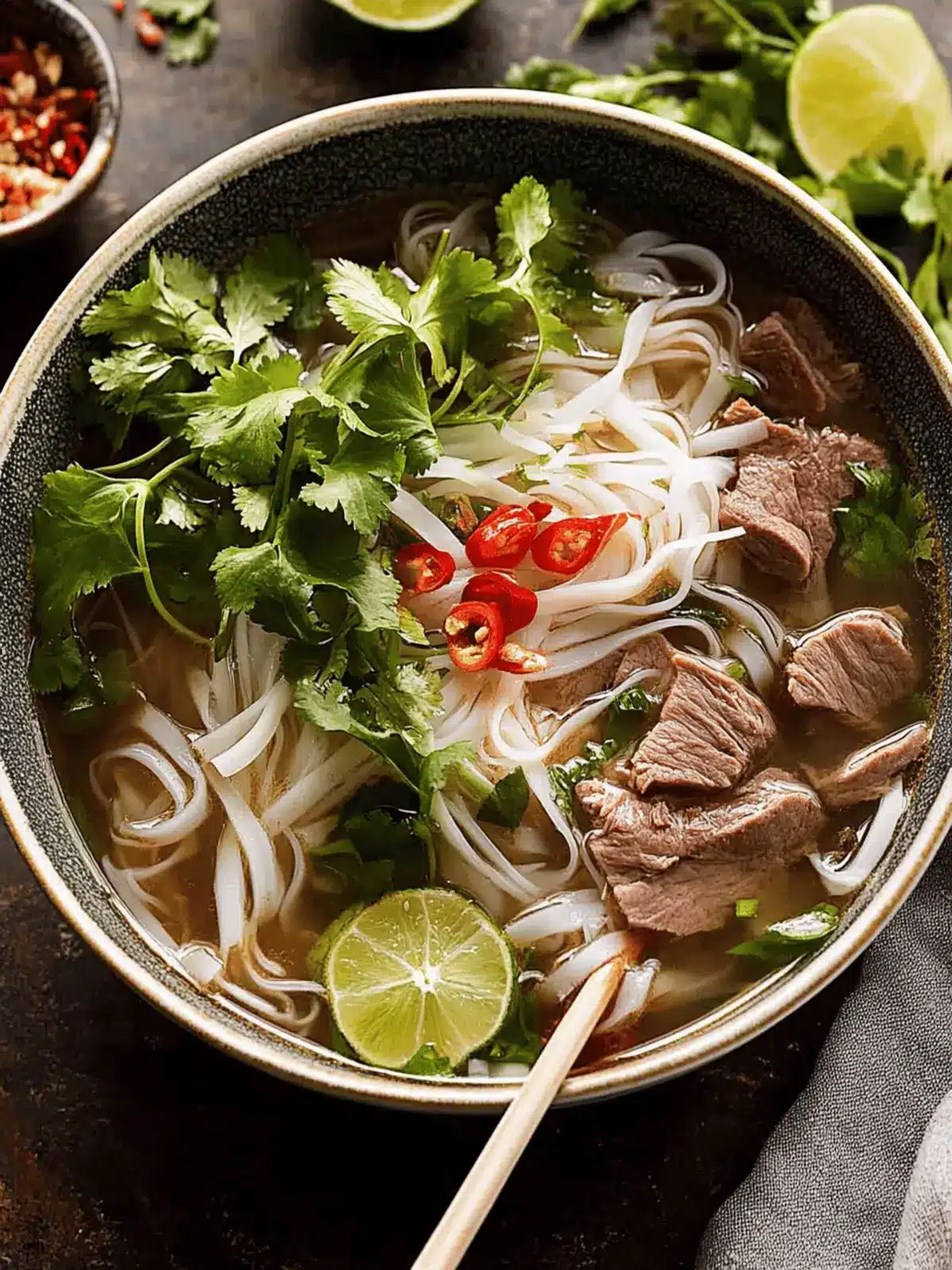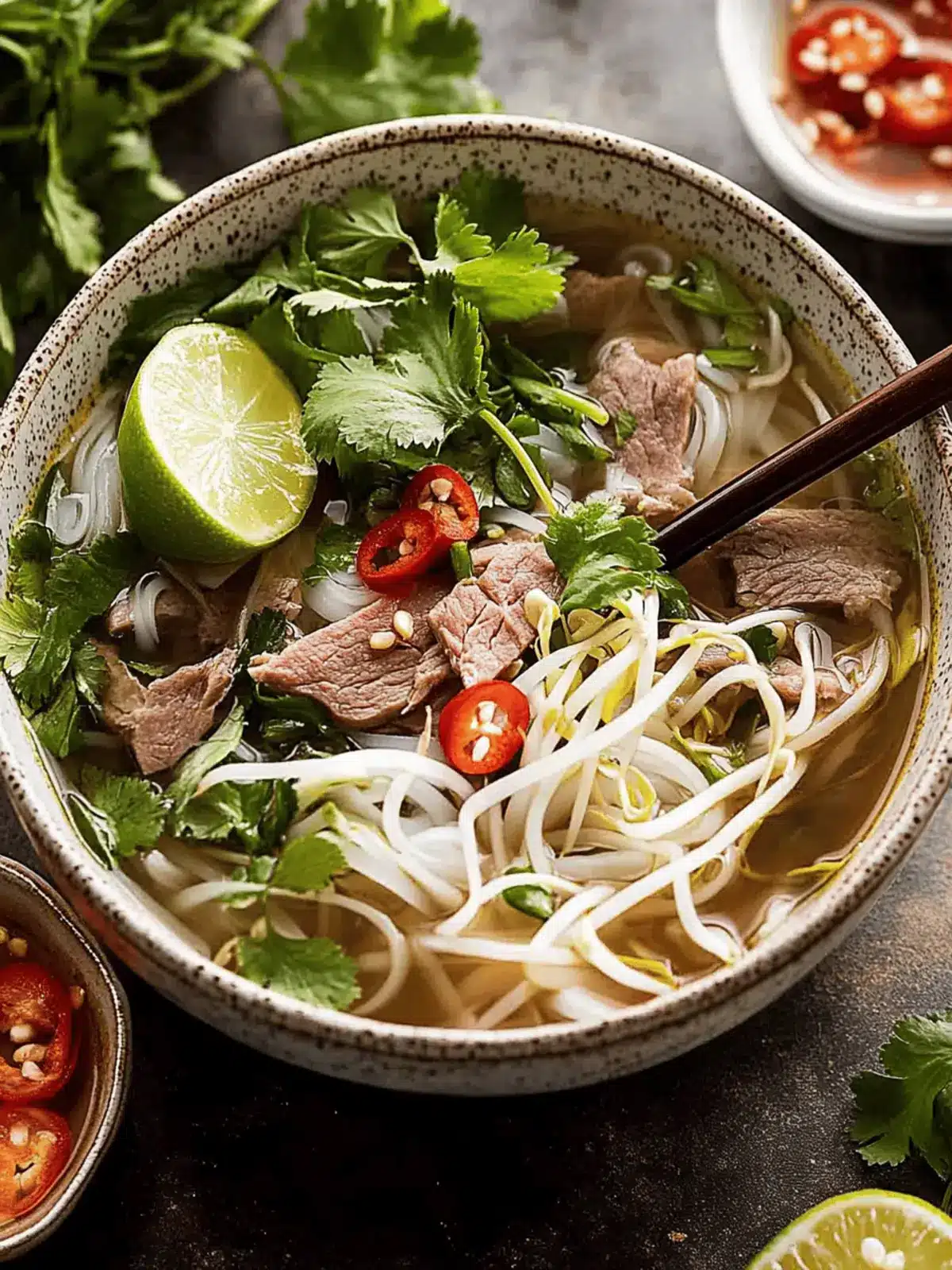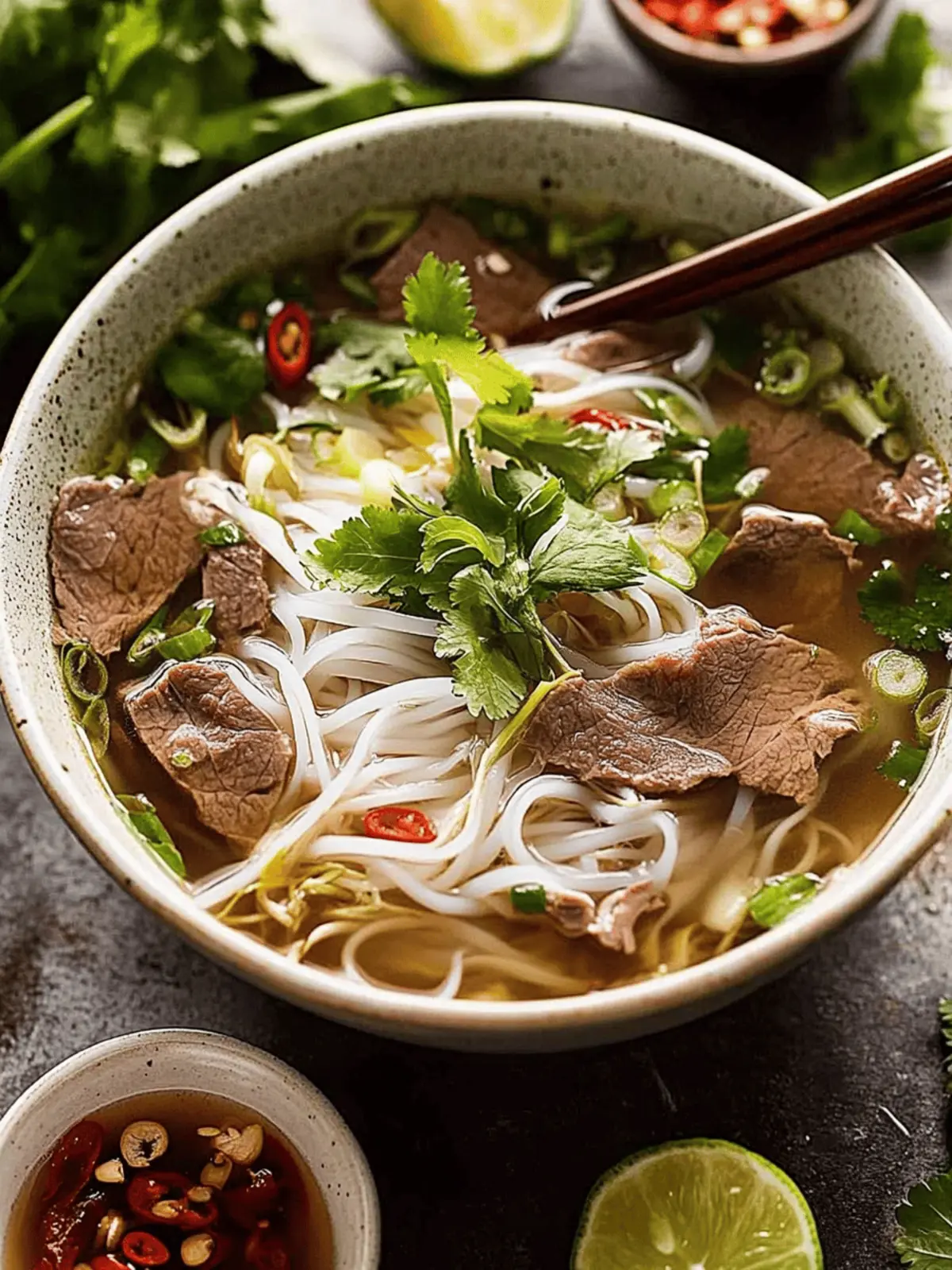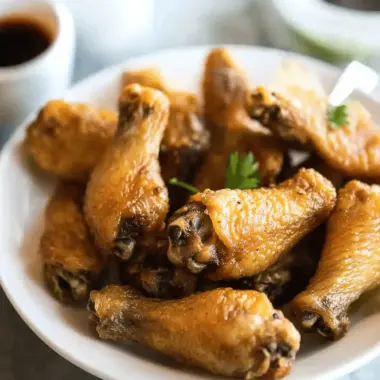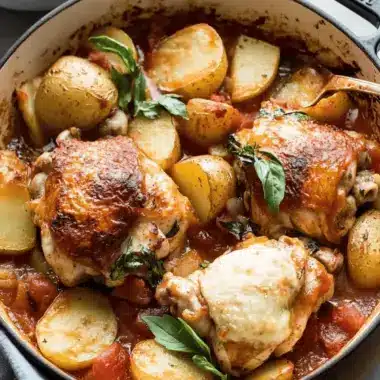When the craving for a heartwarming bowl of noodle soup strikes, nothing compares to a steaming bowl of homemade Vietnamese Pho. The moment you lift your spoon to your mouth, the fragrant steam envelops you, teasing your senses with the soothing aroma of star anise, cinnamon, and a hint of ginger. I learned this traditional Vietnamese Pho recipe during a long cooking session with my neighbor, who swears by the power of a slow-simmered broth.
With tender slices of beef brisket nestled among chewy rice noodles, this dish is more than just a meal; it’s an experience that transports you straight to the bustling streets of Vietnam. Best of all, crafting this beef pho at home allows you to control the flavors, ensuring a rich, satisfying broth that can never be replicated by takeaway. So, whether you’re looking to impress guests or simply indulge in the comforts of a lovingly made soup, this Vietnamese Pho recipe is your key to culinary bliss.
Why is this Vietnamese Pho recipe special?
Homemade perfection: The rich, homemade beef broth elevates this dish beyond the typical takeout experience.
Aromatic spices: Infused with star anise, cinnamon, and more, every spoonful is bursting with flavor.
Simple steps: With straightforward instructions, even novice cooks can master this comforting classic.
Versatile options: Customize your soup with fresh herbs and vibrant toppings for a personal touch.
Crowd-pleaser: This hearty noodle soup is perfect for gatherings, ensuring everyone leaves satisfied and happy.
Vietnamese Pho Ingredients
• Wondering what goes into this incredible dish?
For the Broth
- Beef Brisket – Adds rich beef flavor and holds up to long cooking; consider using boneless beef short ribs as a substitute.
- Meaty Beef Bones – Contributes robust depth to the broth; oxtail can serve as an excellent alternative.
- Marrow Bones – Provides richness to the broth; leg, shin, or knuckle bones are ideal for that silky texture.
- Onions – Charred for a smoky flavor, essential for the broth’s complexity.
- Ginger – Similar to onions, charred to impart depth of flavor to your Vietnamese Pho.
- Star Anise, Cinnamon, Cardamom, Cloves, Coriander Seeds – Signature spices that create the iconic Pho aroma and taste.
- Water – The base for the broth; quality water ensures a well-balanced consistency.
- Fish Sauce – Adds umami and salty depth; light soy sauce can be used for a different flavor profile.
For the Noodles
- Rice Noodles – A key component for the soup’s structure; any flat rice noodles will do!
For the Garnish
- Fresh Herbs (Thai Basil, cilantro) – Essential for serving, adding a burst of freshness.
- Lime Wedges & Sliced Chili – Brighten flavors and add a dash of heat for your perfect bowl of Pho.
This Vietnamese Pho recipe is not just a meal; it encapsulates tradition and love, making each bite a cherished experience.
How to Make Vietnamese Pho
- Prepare Aromatics: Start by charring the onion and ginger in a skillet until they have a nice smoky scent, then set them aside to enhance the broth’s flavor.
- Remove Impurities: Bring the beef brisket and bones to a boil in a pot of water for about 5 minutes. Drain and rinse them under cold water to remove impurities; this is essential for a clear broth.
- Make Broth: In a clean pot, combine the beef, bones, charred onion, ginger, spices, sugar, and salt. Pour in enough water to cover everything, then bring it to a gentle simmer for 3 hours, allowing all those flavors to meld.
- Remove and Cool Brisket: After simmering, take out the brisket, let it cool slightly, and refrigerate it for when you’re ready to slice and serve.
- Simmer Broth Further: Allow the broth to continue simmering uncovered for an additional 40 minutes; this intensifies the flavors even more.
- Strain the Broth: Strain the broth through a fine-mesh sieve to remove solid bits. Adjust the seasoning as needed to create the perfect balance of flavors.
- Assemble Soup: Prepare your rice noodles according to the package instructions. Place the cooked noodles in bowls, add raw beef slices, and ladle hot broth over them for perfect tenderness.
- Serve with Toppings: Provide fresh herbs, lime wedges, and sliced chili on the side, enabling everyone to customize their bowl of Vietnamese Pho just how they like it!
Optional: Add crispy fried onions for a delightful crunch.
Exact quantities are listed in the recipe card below.
What to Serve with Homemade Vietnamese Pho?
Enhance your Pho experience with these delectable pairings that celebrate Vietnamese flavors and textures.
- Crispy Egg Rolls: Perfect for a crunchy contrast, these bites of savory goodness add a delightful texture alongside your warm broth.
- Fresh Rice Paper Rolls: Lightweight and filled with shrimp or veggies, they are a refreshing complement that balances the richness of the Pho.
- Spicy Chili Sauce: A drizzle of this fiery sauce elevates the flavor, adding a vibrant kick to the soothing broth.
- Fragrant Thai Basil: These aromatic leaves bring an earthy freshness, making every spoonful of Pho more exciting and fragrant.
- Zesty Lime Wedges: Squeezing lime over the Pho brightens the dish, enhancing its flavors with a tangy twist.
- Chili Oil: A drizzle of this deep red oil not only adds a beautiful color but also an irresistible warmth that awakens the senses.
- Jasmine Iced Tea: Cool and soothing, this subtly fragrant drink refreshes your palate and pairs wonderfully with the warm noodle soup.
- Pandan Coconut Cake: For dessert, this sweet and aromatic treat provides a perfect ending, balancing out the savory notes of your meal.
Each of these accompaniments brings a unique element to your Vietnamese Pho experience, making it truly unforgettable.
How to Store and Freeze Vietnamese Pho
Fridge: Store leftover broth in an airtight container in the refrigerator for up to 3 days. Be sure to cool it completely before sealing to retain freshness.
Freezer: Freeze the broth in portions using freezer-safe containers for up to 3 months. This way, you can enjoy your homemade Vietnamese Pho anytime you crave it!
Reheating: When ready to use, simply thaw overnight in the fridge, then reheat on the stovetop until hot. Freshly slice the brisket and add it to the hot broth just before serving.
Beef Storage: If preserving cooked brisket, wrap it tightly in plastic wrap or store in an airtight container in the fridge for up to 4 days, ensuring flavor and moisture are maintained.
Make Ahead Options
These Vietnamese Pho recipe components are perfect for meal prep, making it easier to enjoy this delightful dish on busy nights! You can prepare the broth up to 3 days in advance; just allow it to cool completely before refrigerating. The charred onions and ginger used in the broth can also be prepped a day ahead. To maintain flavor and quality, store the broth in an airtight container. When you’re ready to serve, simply reheat the broth, prepare the rice noodles according to package instructions, and assemble with fresh ingredients like herbs and lime. This method ensures your homemade Vietnamese Pho retains its comforting essence with minimal effort when it’s time to enjoy!
Expert Tips for Homemade Vietnamese Pho
- Broth Essentials: Use a combination of beef and bones to avoid a weak flavor; skipping meat may lead to a flat broth.
- Chill Out: Partially freeze the beef brisket before slicing to achieve those perfect, ultra-thin pieces for your Vietnamese Pho.
- Toasted Spices: Toast your spices before adding them to the broth for enhanced aroma and depth of flavor.
- Storage Savvy: Keep your homemade broth in the freezer for several months; it’s perfect for quick meals on busy days.
- Garnish Generously: Fresh herbs and lime are critical for brightening your Pho’s flavors, so don’t skimp on garnishes!
Pho Variations & Substitutions
Feel free to get creative with this Vietnamese Pho recipe for a unique twist on a classic favorite!
- Vegetarian: Use vegetable broth and add mushrooms, tofu, or seitan for a rich, umami flavor without beef.
- Gluten-Free: Swap traditional rice noodles for rice vermicelli or gluten-free noodles to accommodate dietary needs while keeping that comforting vibe.
- Spicy Kick: Toss in sliced jalapeños or a splash of sriracha to elevate the heat level, balancing beautifully against the broth’s richness.
- Add Extra Veggies: Incorporate bok choy, bean sprouts, or spinach for added nutrition and vibrant color, making every bowl feel healthful and fresh.
- Southeast Asian Flair: Infuse the broth with lemongrass for a refreshing twist that brightens the flavor profile, evoking unmissable notes of summer.
- Broth Depth: Toast the spices before adding them to the broth to unlock deeper flavors, ensuring every spoonful is a burst of aromatic delight.
- Savory Swaps: Experiment with hoisin sauce in place of fish sauce for a different yet equally delicious umami punch.
- Noodle Variety: Try different flat noodles like wider rice noodles or even egg noodles to create a delightful texture contrast in your soup.
Homemade Vietnamese Pho Recipe FAQs
What kind of beef should I use for Vietnamese Pho?
Absolutely! For the best flavor, use beef brisket combined with meaty beef bones. This combo creates a rich and hearty broth. If you’d like, you can substitute brisket with boneless beef short ribs or even oxtail if you want an extra depth of flavor.
How should I store leftover Vietnamese Pho?
Very easy! Store the broth in an airtight container in the fridge for up to 3 days. Make sure it’s cooled completely before sealing it to keep everything fresh. If you’re looking to save it for later, you can freeze the broth in portions for up to 3 months.
Can I freeze Vietnamese Pho broth? How do I do it?
Yes! It’s super convenient. To freeze your broth, allow it to cool, then pour it into freezer-safe containers or zip-top bags. I recommend portioning it out to make future meals easier. When you’re ready to use it, thaw it overnight in the fridge, then reheat on the stovetop until hot.
What if my broth is cloudy? How can I fix that?
No worries! A cloudy broth often results from impurities. To prevent this, be sure to boil your beef brisket and bones for about 5 minutes before rinsing to remove any foam or impurities. If it’s already made, you can try straining it through a fine-mesh sieve or a cheesecloth to clarify.
Can I modify this recipe for dietary restrictions?
Absolutely! For a gluten-free option, use tamari instead of fish sauce. If you’re vegan or vegetarian, consider making a broth with rich vegetable stock and mushrooms for that umami flavor. You can still enjoy the fresh herbs and toppings that make Pho so special.
How do I achieve the perfect noodle texture with my rice noodles?
Very simple! Follow the package instructions to prepare your rice noodles, but keep in mind that undercooking them slightly will allow them to absorb the broth’s flavors better. Drain them, then briefly rinse with cold water to stop the cooking process—this will help maintain the perfect chewy texture when combined with the hot broth.
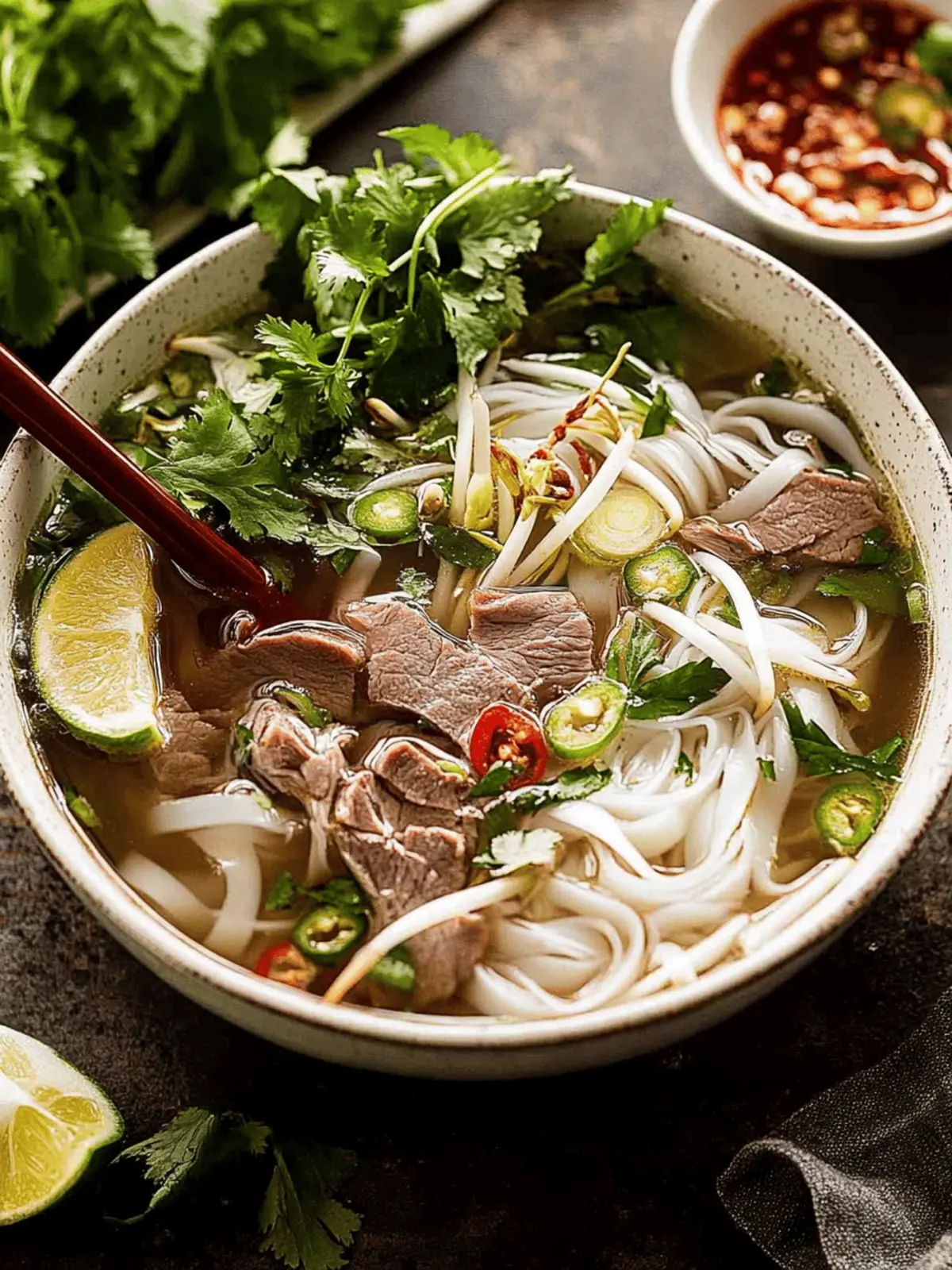
Savory Vietnamese Pho Recipe: Homemade Beef Broth Magic
Ingredients
Equipment
Method
- Char the onion and ginger in a skillet until smoky, then set aside.
- Bring beef brisket and bones to a boil in a pot of water for 5 minutes. Drain and rinse under cold water.
- In a clean pot, combine beef, bones, charred onion, ginger, spices, sugar, and salt. Add enough water to cover and simmer for 3 hours.
- Remove brisket, cool, and refrigerate for slicing later.
- Continue simmering broth uncovered for an additional 40 minutes.
- Strain the broth through a sieve to remove solids and adjust seasoning.
- Prepare rice noodles according to package instructions. Place in bowls, add raw beef slices, and ladle hot broth over.
- Serve with fresh herbs, lime wedges, and sliced chili for customization.

